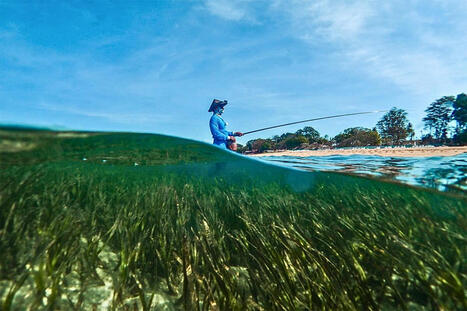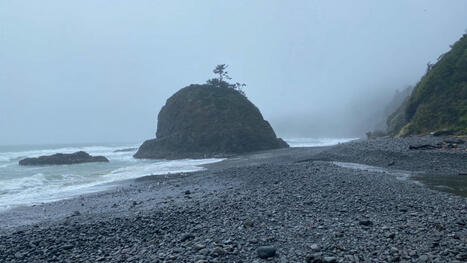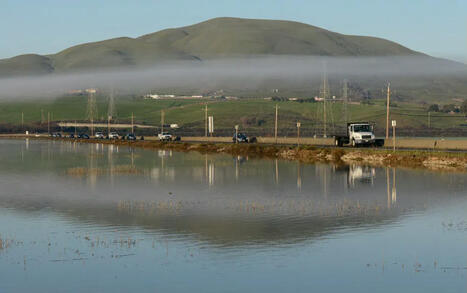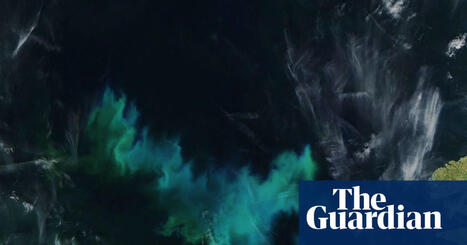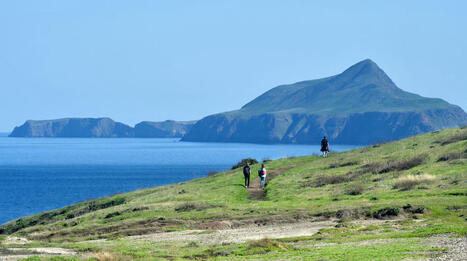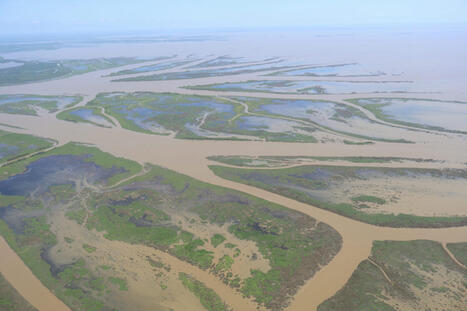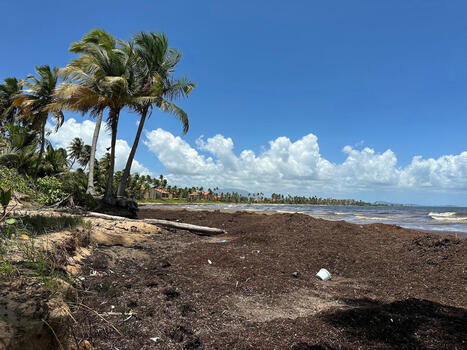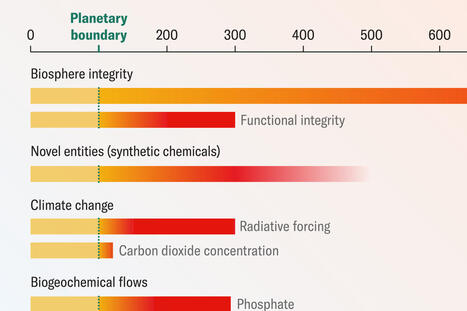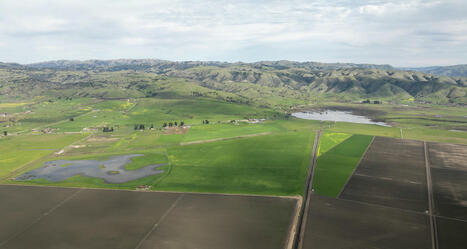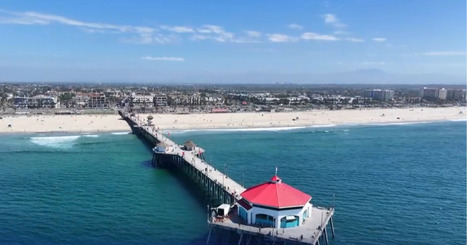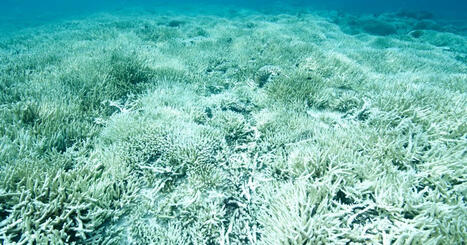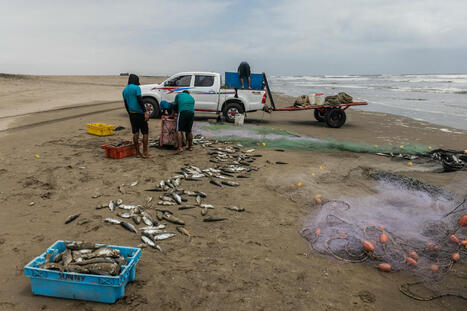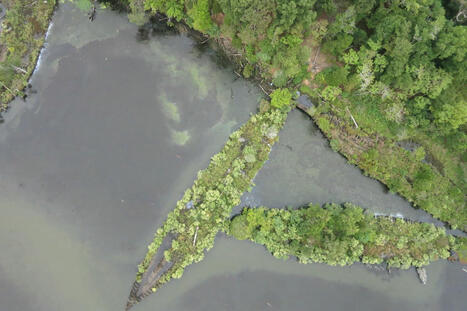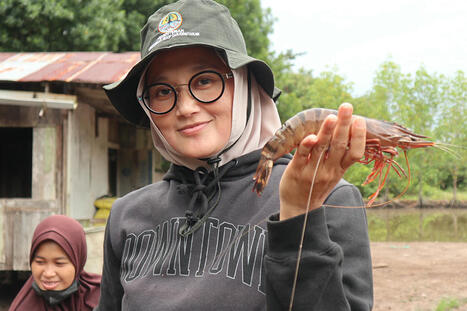
|
Scooped by
Valerie P.
onto Coastal Restoration October 1, 1:32 PM
|
Follow, research and publish the best content
Get Started for FREE
Sign up with Facebook Sign up with X
I don't have a Facebook or a X account
Already have an account: Login
Coastal management and restoration of our planet's coastlines with a particular focus on California, Louisiana and the Pacific. Emphasizing wetland restoration, aspects of agriculture in the coastal plain, fisheries, dealing with coastal hazards, and effective governance.
Curated by
PIRatE Lab
 Your new post is loading... Your new post is loading...
 Your new post is loading... Your new post is loading...
Howhighcenter's curator insight,
June 2, 2022 4:57 PM
What does an acid trip typically feel like? Each person’s experience with acid will be different. Indeed, each trip may be different. One might be very light, but others can take a frightening and overwhelming turn. Symptoms may begin to show 20 to 90 minutesTrusted Source after taking a dose. The main episode can last several hours. Acid is a long-acting drug. It stays in the body 6 to 15 hoursTrusted Source. Most acid trips won’t last more than 9 hours. The trip During this period of “tripping” or active effects, you may begin to experience sensationalized perceptions of what’s happening around you. This can include “seeing” color or “tasting” sounds. Stationary items, like furniture, may begin to “move” or swell or shrink before your eyes. Coming down Coming down from the trip will feel like you’re gradually returning to Earth. Signs may begin to lessen in intensity. You may feel tired after getting through the hours-long trip and want to sleep. Afterglow An “afterglow” is possible for several hours after the end of the trip, too. This may feel like everything is “lighter” or “brighter” than before the trip. You may also have moments of flashbacks for several hours, even days, after the acid trip is over. Microdosing A microdose is a small dose of a psychedelic drug like LSD, often one-tenth of a normal dose. It’s sometimes used to help treat symptoms of anxiety and depression, but it’s not meant to completely encompass your day. However, little is known about the long-term effects of this practice. Visit Howhighcenter.com for some Psychedelic Products.. . https://howhighcenter.com/shop/chocolate-bars/blue-meanies-mushroom/ https://howhighcenter.com/shop/chocolate-bars/charming-bars/ https://howhighcenter.com/shop/chocolate-bars/dark-chocolate-bars/ https://howhighcenter.com/shop/chocolate-bars/magic-chocolate-caps/ https://howhighcenter.com/shop/chocolate-bars/one-up-mushroom/ https://howhighcenter.com/shop/chocolate-bars/one-up-mushroom-bar-3-5g-shrooms-chocolate-bar/ https://howhighcenter.com/shop/chocolate-bars/open-minded-chocolate-bars/ https://howhighcenter.com/shop/chocolate-bars/polkadot-magic-muchroom-belgian-bar/ https://howhighcenter.com/shop/chocolate-bars/rick-and-morty-trippy-flip/ https://howhighcenter.com/shop/chocolate-bars/space-bars-dark-chocolate/ https://howhighcenter.com/shop/chocolate-bars/trippy-flip-milk-chocolate-bar/ https://howhighcenter.com/shop/chocolate-bars/trippy-treats-magic-shrooms-chocolate-bars/ https://howhighcenter.com/shop/chocolate-bars/wavy-bar-chocolate-mushroom/ https://howhighcenter.com/shop/shrooms/albino-penis-envy-mushrooms/ https://howhighcenter.com/shop/shrooms/amanita-muscaria/ https://howhighcenter.com/shop/shrooms/amazon-cubensis/ https://howhighcenter.com/shop/shrooms/blue-meanies-mushrooms/ https://howhighcenter.com/shop/shrooms/brazilian-cubensis/ https://howhighcenter.com/shop/shrooms/columbia-cap/ https://howhighcenter.com/shop/shrooms/dancing-tiger/ https://howhighcenter.com/shop/shrooms/golden-caps/ https://howhighcenter.com/shop/shrooms/golden-teachers/ https://howhighcenter.com/shop/shrooms/hawaiian-caps/ https://howhighcenter.com/shop/shrooms/p-e-shrooms/ https://howhighcenter.com/shop/shrooms/psilocybe-azurescens-flying-saucer-mushrooms/ https://howhighcenter.com/shop/lsd/25i-nbome-blotter/ https://howhighcenter.com/shop/lsd/liquid-lsd/ https://howhighcenter.com/shop/lsd/liquid-lsd-acid-100/ https://howhighcenter.com/shop/lsd/liquid-lsd-acid-200/ https://howhighcenter.com/shop/lsd/lsd-blotter-200-%c2%b5g/ https://howhighcenter.com/shop/lsd/lsd-blotter-250-%c2%b5g/ https://howhighcenter.com/shop/lsd/lsd-sheets/ https://howhighcenter.com/shop/dmt/5-meo-dmt/ https://howhighcenter.com/shop/dmt/crimson-palms-hotel/ https://howhighcenter.com/shop/dmt/dmt-vape/ https://howhighcenter.com/shop/dmt/dmt-vape-top-diy-refill-syringe/ https://howhighcenter.com/shop/dmt/mdma-powder/ https://howhighcenter.com/shop/dmt/raw-dmt-powder-1g/ https://howhighcenter.com/shop/dmt/somad-dmt-vape-top/

Cole Schwab's curator insight,
September 16, 2022 3:09 PM
This article goes over how nature can help us achieve our goal set forth by the paris climate agreement, which is to limit global temperature rise to less than 2 degrees celcius. If we are smart and careful we can use nature as our ally to help fight climate change. However if we are not so smart nature could hinder our fight with rising global temperatures and contribute ultimately to natures desctruction.
John Maines's comment,
October 10, 12:28 AM
Who knew that depleting groundwater, then dousing it with rain, would cause the earth to rebound upward once the rain was gone? There are shifts with water happening at faster rates than replenishment can occur. I like that this article referenced the mismanagement and disappearance of our waters, creating the San Joaquin Valley, and how the earth sank in that instance, and how we are actively trying to balance the output with input by allowing storm drain water to be spread out over land to be reabsorbed. Maybe one day there will be less concrete on our earth's surface and more ground cover, so we can filter water the old-fashioned way!
Kailani Franklin's comment,
October 9, 2:38 AM
This is really concerning news. It's so saddening to think about how this will affect marine life and ecosystems. There's so much intelligent life forms down in the ocean such as killer whales, bottlenose dolphins, and octopi who are being forced to live in almost uninhabitable conditions. All of these marine animals have the capability to feel deep emotions and form connections. Their intelligence may be different from humans and they may not be able to speak the same language as us but they are still sentient beings. It's so unfair the pain that is being done unto them just because humans are so caught up in their centeredness and are hell bent on upholding a system(capitalism) that only succeeds under exploitation.

John Burns's comment,
October 9, 12:44 AM
The start of several steps toward keeping the roads functioning through climate changes. A 60ft bridge that is going to be 400ft at the end of this project. Hopefully all goes well and the state keeps ahead of sea-level rise.
Katheryn Galvez's comment,
October 10, 3:44 PM
This article is interesting because though we do hear of warmer climates affecting the flowering of plants which affects pollinators I have never heard of it happening in the ocean. This article really highlights the fact that these uncommon events are becoming more common due to climate change. This will likely be detrimental to the ocean ecosystem, especially for species that are not very resilient or have small populations as this could lead to their extinction.

John Burns's comment,
October 9, 12:54 AM
I think that is good they will continue the trips out. I know there are school programs that had plans for day trips. This will keep the kids happy and hopefully still get them some education as well.
Timothy Whitfield's comment,
October 10, 7:39 PM
It's good that the trips out will continue, at least. I think the difficulty in reaching the islands hopefully means that the people that are still coming are generally a little more invested in keeping the parks clean and taking care of it.
ceridwen baker's comment,
October 2, 4:39 PM
all though a startling story feeding in to societal shark phobia, this is a relatively reassuring conidering the shark was so small and caused minor injuries. with how huge the ocean is and the fact that are wild and instinctual creatures that respond to the information they have. stastically all of us have been in the water with sharks and even shore line attacks are rare. a scary situation but also a reminder that certain activities come with risk but are not necessarily entirely dangerous. Mountain lions I feel are in a similar position of being ecologically important while also being dangerous in one on one human interactions; yet, simultanously having a very low attack/ lethality towards humans over all. I do wonder if climate changes and its dimensions of impact will cause an increase in human - wild life interactions.
Katheryn Galvez's comment,
October 3, 12:07 PM
The landslide is being shown as an isolated accident, adamantly stating there is no connection to the earlier landslide only 4 miles away. It feels like it is being said like this to avoid acknowledging the slope’s instability and the city’s potential liability. By insisting the cause is “unknown” and requiring homeowners to hire their own geotechnical engineers, officials appear to be shifting blame and costs onto residents while maintaining a narrative that keeps the city safe from any responsibility. This approach not only downplays long-term risks but may also create a false sense of security about future erosion and landslide hazards.
|
Olivia Lucas's comment,
October 9, 7:51 PM
Hey David! This was a neat article and I believe it effectively raises alarm about the gravity of ocean acidification’s implications for Earth’s systems. Most notably, the emphasis on pH decline being “small in number but large in impact” was important and i’m glad it was emphasized. Thanks for sharing!
Ethan Primeau's comment,
October 10, 2:17 PM
Hey David, this article left me a painful reminder that as we as a society continue to neglect the impacts of climate change, these issues will persist and continue to get worse.
Simon Krueger's comment,
October 9, 1:38 PM
This shows how disruptive marine heat waves can be at the very basic level of the food web and highlights serious impacts to marine climate feedbacks.
Angelica Apelado's comment,
October 10, 8:56 PM
We listen to the voices of the indigenous. They give great insight on how to take care of the land.
Jacqueline Pikey's comment,
October 2, 7:38 PM
Crazy how you don't see news like this on any mainstream media.

Mia Arzola Hinderliter's comment,
October 3, 1:03 AM
It's sad and alarming that seven out of nine of the boundaries have been crossed and nothing has been done. This is a serious issue and no world leader is talking about consequences.

Valerie P.'s comment,
October 6, 5:19 PM
Geez,... extremely worrying to hear. We've known for many years just how much coral reefs have been suffering due to rising temperatures and elevated levels of CO2 being dissolved into the ocean, because of anthropogenic emissions. I remember hearing even back ten years ago, the huge percentage of healthy coral the great barrier has lost because of this, and the resulting coral bleaching. This happening to the point that today, the reef has been reduced over 50% is so tragic. And (like Jacqueline said above!), little next to nothing is being done about. We lose these vital ecosystems, and that impact will reflect throughout the whole coast/ ocean. It seems issues like these are only taken seriously when we this harm finally spreads to affect us directly, or when given enough incentives. The truth is that we have so much resources and tools to start really helping and tackling larger-scale environmental issues. We just gotta rally governments on it somehow.
Jacqueline Pikey's comment,
October 2, 7:38 PM
This is so sad. Also why educating the masses os important

Hayden Fausset's comment,
October 1, 4:38 PM
That's really fascinating marine organism can live in that environment despite the chemical toxicity levels. It makes sense that they dwell in the weapons casing rather than in the uncovered explosive material. I would assume more chemicals leach from there. I wonder if this habitat can sustain life for long periods of time. Will the chemicals dilute and degrade over time, or will the organism adapt?

William H's comment,
October 2, 3:31 PM
This article was very interesting, as it provided insight into how living organisms can adapt to unlikely environments. I was surprised to learn that the green crab, Atlantic cod, sea anemones, starfish, and even certain species of worms are thriving on discarded munitions. However, this also raises serious questions about long-term chemical pollution, safety, and how we should manage these artificial habitats. While retrieving and safely disposing of the munitions might be ideal, the cost could be a major obstacle and it’s unclear what kind of artificial habitat, if any, could replace them. Would marine life be better off without these remnants of war, or should we let them be? This really highlights the difficult trade-offs between war history, ecology, conservation, and restoration. - Written by Yaiza Delgado

Mia Marie Uribe's comment,
October 5, 1:18 PM
The abundance of sea creatures found living on the ships versus the seafloor in this area was such a huge difference! I love that they're thriving! Fascinating that the toxic chemical concentrations in some areas were as high as what was previously thought to be deadly amounts and yet they continue to thrive on the hard surfaces of the warships.

Nicole Kouyoumdjian's comment,
September 30, 9:22 PM
I appreciate this way of including shrimp farmers as stakeholders and not excluding them from making their livelihoods, rather empowering them to make this more sustainable.
|







